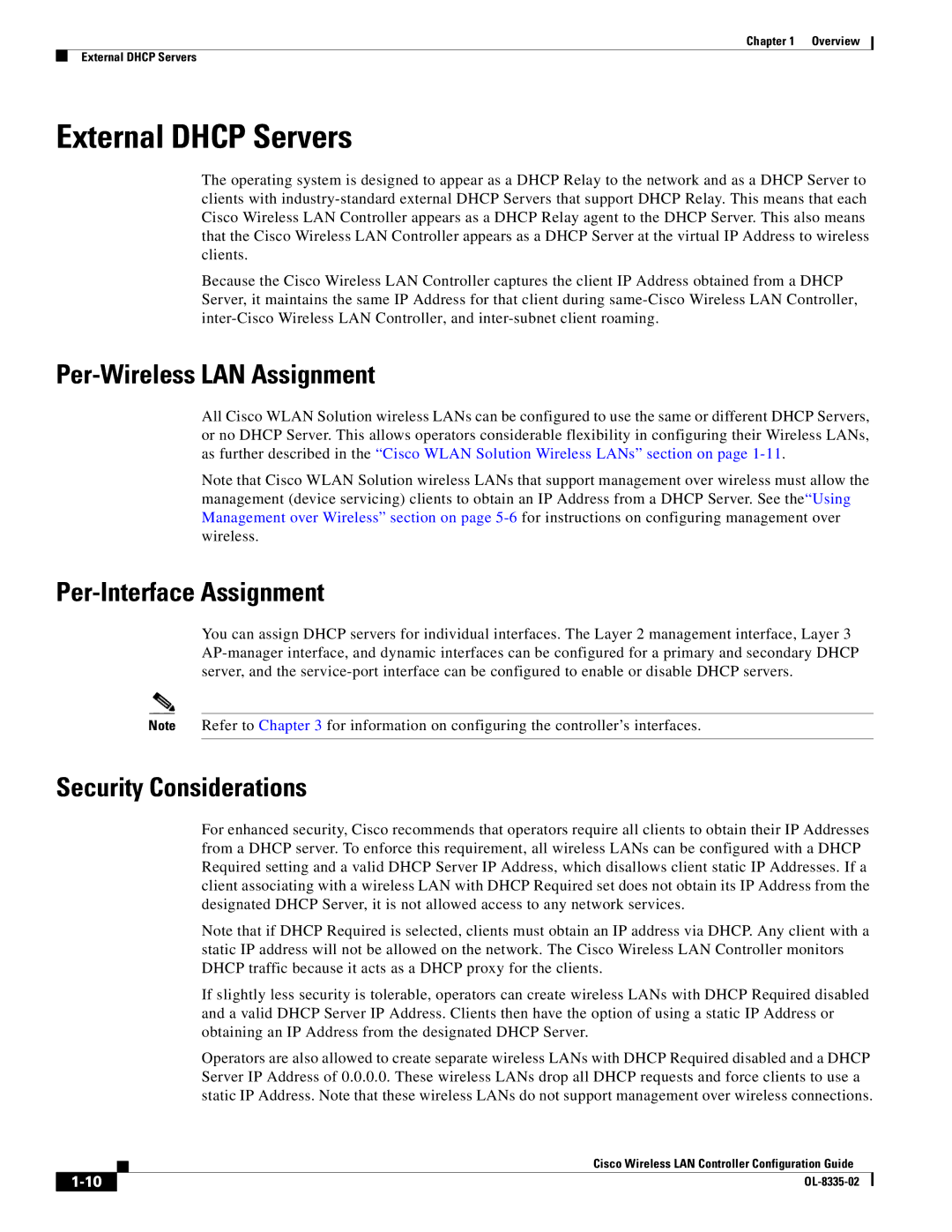
Chapter 1 Overview
External DHCP Servers
External DHCP Servers
The operating system is designed to appear as a DHCP Relay to the network and as a DHCP Server to clients with
Because the Cisco Wireless LAN Controller captures the client IP Address obtained from a DHCP Server, it maintains the same IP Address for that client during
Per-Wireless LAN Assignment
All Cisco WLAN Solution wireless LANs can be configured to use the same or different DHCP Servers, or no DHCP Server. This allows operators considerable flexibility in configuring their Wireless LANs, as further described in the “Cisco WLAN Solution Wireless LANs” section on page
Note that Cisco WLAN Solution wireless LANs that support management over wireless must allow the management (device servicing) clients to obtain an IP Address from a DHCP Server. See the“Using Management over Wireless” section on page
Per-Interface Assignment
You can assign DHCP servers for individual interfaces. The Layer 2 management interface, Layer 3
Note Refer to Chapter 3 for information on configuring the controller’s interfaces.
Security Considerations
For enhanced security, Cisco recommends that operators require all clients to obtain their IP Addresses from a DHCP server. To enforce this requirement, all wireless LANs can be configured with a DHCP Required setting and a valid DHCP Server IP Address, which disallows client static IP Addresses. If a client associating with a wireless LAN with DHCP Required set does not obtain its IP Address from the designated DHCP Server, it is not allowed access to any network services.
Note that if DHCP Required is selected, clients must obtain an IP address via DHCP. Any client with a static IP address will not be allowed on the network. The Cisco Wireless LAN Controller monitors DHCP traffic because it acts as a DHCP proxy for the clients.
If slightly less security is tolerable, operators can create wireless LANs with DHCP Required disabled and a valid DHCP Server IP Address. Clients then have the option of using a static IP Address or obtaining an IP Address from the designated DHCP Server.
Operators are also allowed to create separate wireless LANs with DHCP Required disabled and a DHCP Server IP Address of 0.0.0.0. These wireless LANs drop all DHCP requests and force clients to use a static IP Address. Note that these wireless LANs do not support management over wireless connections.
Cisco Wireless LAN Controller Configuration Guide
| ||
|
